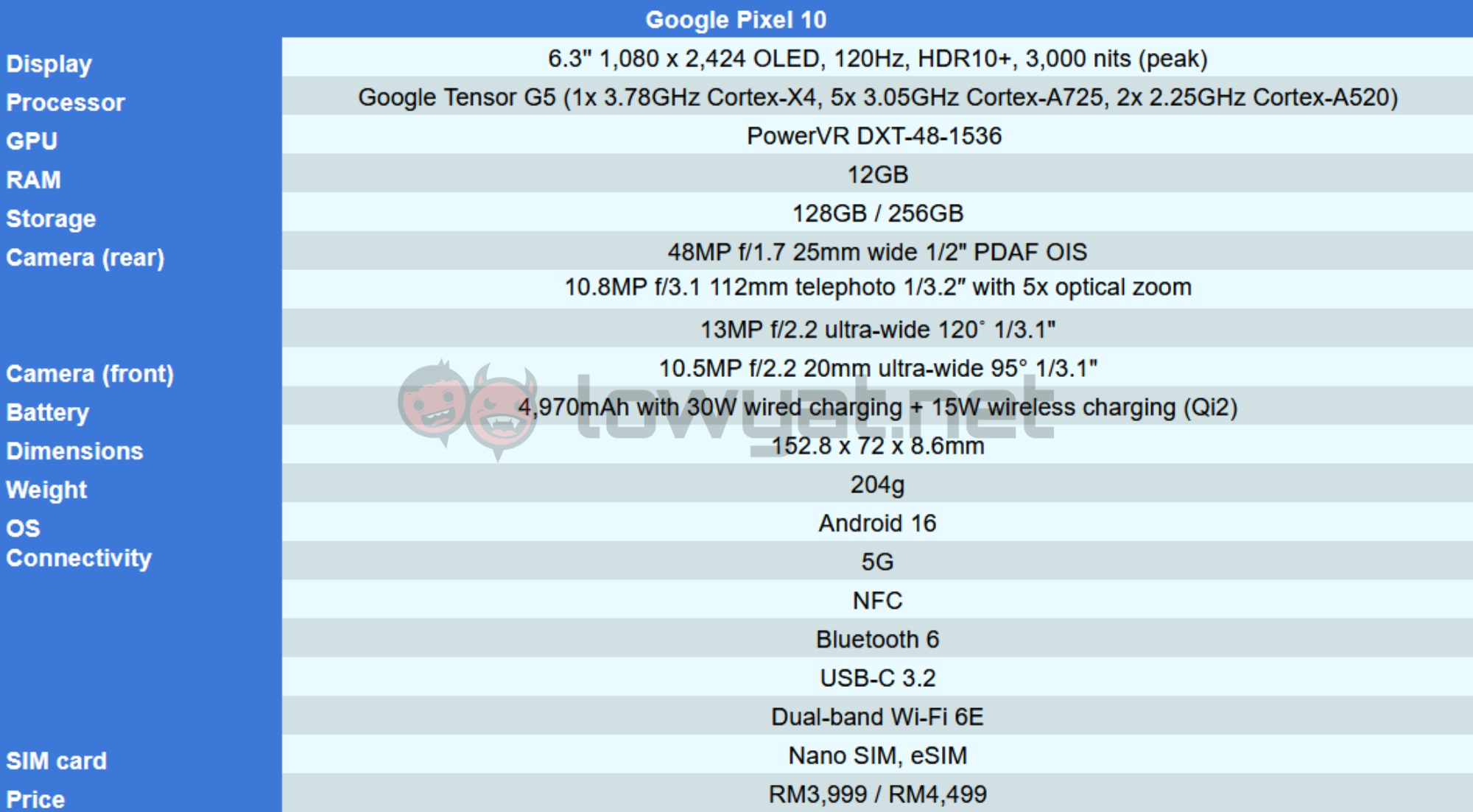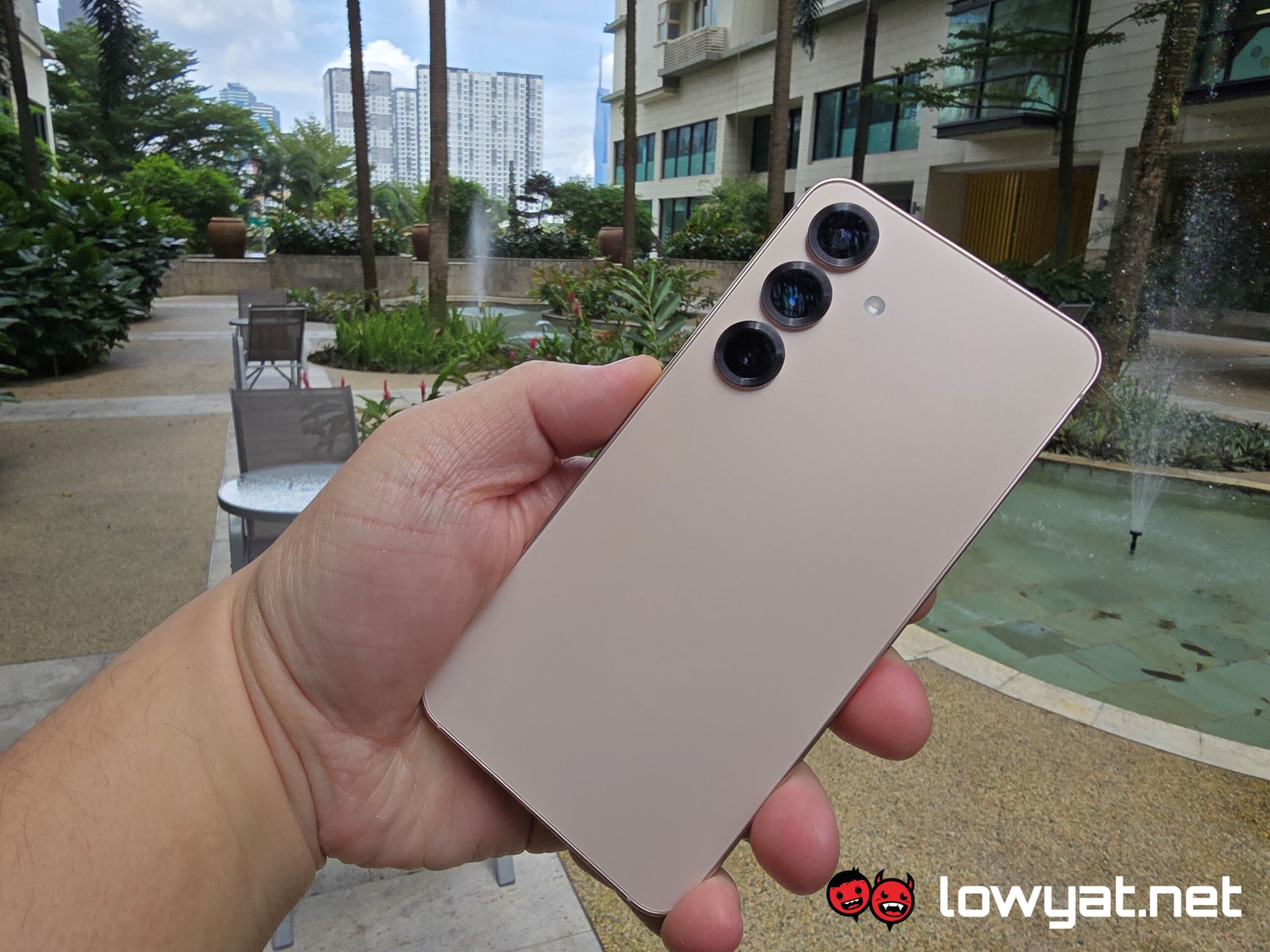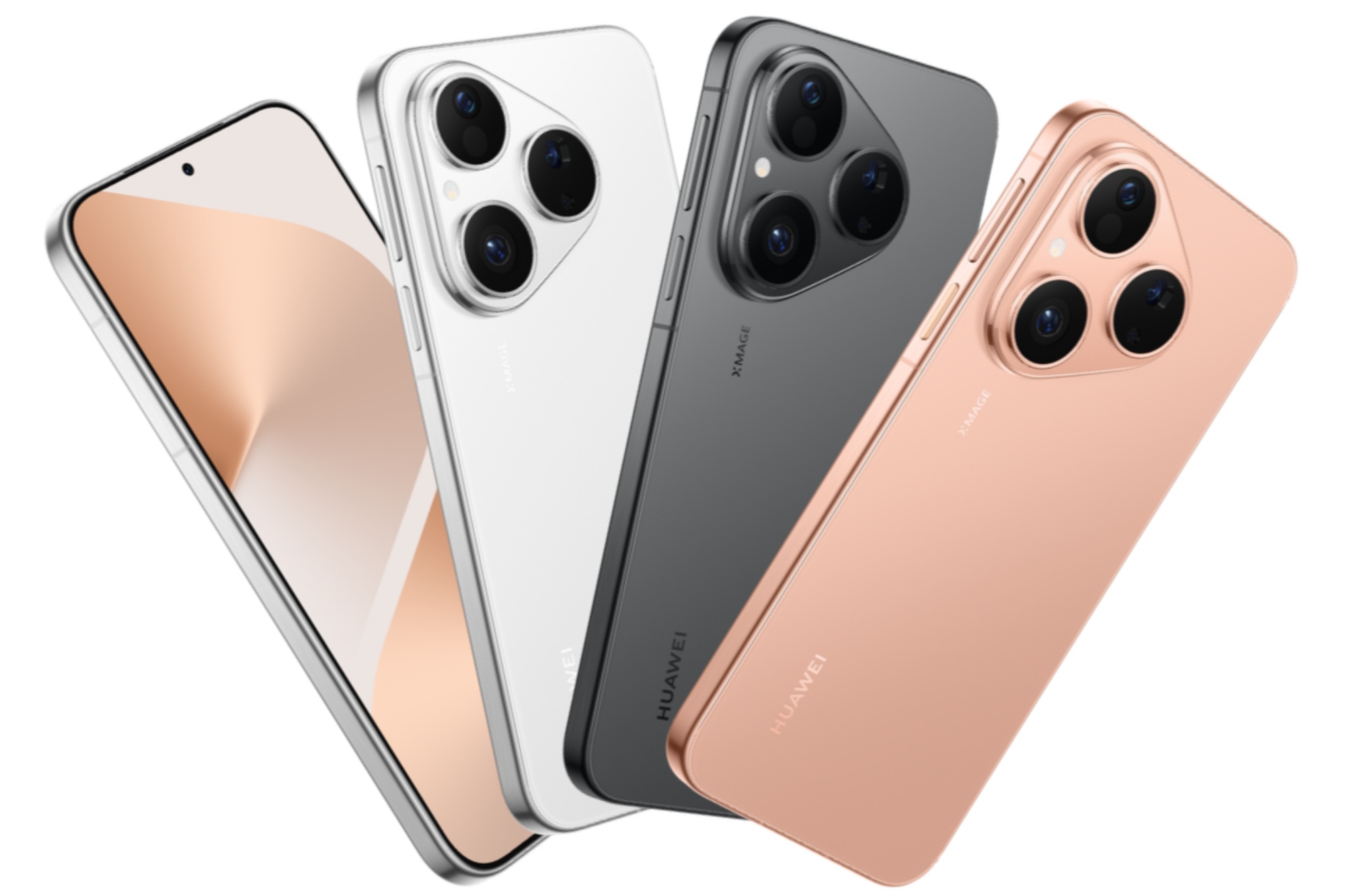The Google Pixel 10 debuted alongside the Pro and Pro XL in August. It’s no secret that the search engine giant is heavily focusing on AI with this generation, with many of the new features heavily featuring the technology.
So, it begs the question: are these features worth the hype? And of course, is there more to the smartphone than just AI? Keep reading.
Specifications

Looks and Functionality
![]()
![]() I’ve already covered my first impressions of the phone, but in short, it’s a pretty hefty device that bears a strong resemblance to the other variants in the series as well as last year’s models. The off-white Frost model has a noticeably purple tint, but otherwise looks quite ordinary.
I’ve already covered my first impressions of the phone, but in short, it’s a pretty hefty device that bears a strong resemblance to the other variants in the series as well as last year’s models. The off-white Frost model has a noticeably purple tint, but otherwise looks quite ordinary.
Aesthetics aside, the phone feels nice to hold in your hand, with a bright enough screen to use on a sunny day. The under-display fingerprint sensor is quick and responsive, which is nice. It is worth noting that the power and volume buttons are flipped when compared to other Android phones, which may take some getting used to.
The phone runs Android 16 right out of the box. This is, of course, pure unadulterated Android without any extra apps pre-installed. That said, Google is among the companies pushing for widespread AI adoption, so the phone comes equipped with a slew of AI-powered features and apps.
Naturally, at the forefront is Gemini, which lives in its own widget on the home page. There’s not much to say here as it’s the same old assistant we’re familiar with, just with easier access to functions like Gemini Live.
![]()
![]() There’s also Pixel Journal, which is a new app launched with the phone. For now, it’s exclusive to the Pixel 10 lineup. If you’re the type to keep a diary, the app might be of some interest. Basically, it more or less mimics the experience of pen and paper journaling, although customisation is fairly limited. The AI gives you prompts to get started, which can be based on the photos you have on the phone, your goals, or any past entries. Once you’re finished with an entry, the AI generates a short reflection on what you’ve written. Personally, I’m not fond of the bot’s input, but to each their own.
There’s also Pixel Journal, which is a new app launched with the phone. For now, it’s exclusive to the Pixel 10 lineup. If you’re the type to keep a diary, the app might be of some interest. Basically, it more or less mimics the experience of pen and paper journaling, although customisation is fairly limited. The AI gives you prompts to get started, which can be based on the photos you have on the phone, your goals, or any past entries. Once you’re finished with an entry, the AI generates a short reflection on what you’ve written. Personally, I’m not fond of the bot’s input, but to each their own.
Out of all the AI-powered features on this phone, the one that sounds the most practical is Magic Cue, as it is designed to pull information from different apps and present it in the relevant contexts. Unfortunately, I was unable to get the feature working, despite my best efforts. At one point, it would insist that I log into my Google account, even though I was already logged in. And even after getting past the issue, these supposed magical suggestions still elude me.
Performance and Battery
![]()
![]() Like the rest of the Pixel 10 family, the base model packs Google’s Tensor G5 chipset. It’s the first processor to be fully developed in-house, and it is admittedly a little rough around the edges. Sure, in most situations, you’re unlikely to experience any world-ending issues. Day-to-day swiping and scrolling is a smooth affair, and apps load up pretty quickly.
Like the rest of the Pixel 10 family, the base model packs Google’s Tensor G5 chipset. It’s the first processor to be fully developed in-house, and it is admittedly a little rough around the edges. Sure, in most situations, you’re unlikely to experience any world-ending issues. Day-to-day swiping and scrolling is a smooth affair, and apps load up pretty quickly.
But if you’re looking to game on this phone, that’s an area where the Pixel 10 noticeably falters. You could probably get away with playing Genshin Impact for extended periods with the settings turned up to eleven, but I wouldn’t recommend it unless you’re willing to contend with some lagging and stuttering.
![]()
![]() In that same vein, running anything more demanding like Destiny: Rising is an exercise in patience. I should note that there was an issue in the early days where you would see some black artifacts while playing, but this has been resolved. Still, the phone struggles to keep up with the game even on low settings.
In that same vein, running anything more demanding like Destiny: Rising is an exercise in patience. I should note that there was an issue in the early days where you would see some black artifacts while playing, but this has been resolved. Still, the phone struggles to keep up with the game even on low settings.
Of course, it may be unfair to judge the Pixel 10 for its gaming performance when the Tensor G5 is not designed for this purpose. After all, this processor was made with AI capabilities in mind. However, regardless of what the numbers say, the AI experience does leave much to be desired. While Google claims that the new chip handles AI tasks faster, they still feel pretty sluggish.
![]()
![]() As for the battery capacity, the Pixel 10 gets a slight upgrade compared to last year’s model. With moderate usage, including some video streaming, the 4,970mAh battery will last about a day and a half. Of course, if you’re more frugal with your phone usage, you could probably stretch it to two days, though I don’t expect it to last much longer unless you’re relegating it to paperweight status. Meanwhile, the device lasted a little over 17 hours in the video streaming test.
As for the battery capacity, the Pixel 10 gets a slight upgrade compared to last year’s model. With moderate usage, including some video streaming, the 4,970mAh battery will last about a day and a half. Of course, if you’re more frugal with your phone usage, you could probably stretch it to two days, though I don’t expect it to last much longer unless you’re relegating it to paperweight status. Meanwhile, the device lasted a little over 17 hours in the video streaming test.
It takes roughly 90 minutes to fully charge from empty despite the slight increase in wired charging speed. Aside from that, the phone supports Qi2 wireless charging with built-in magnets. For now, the Pixel 10 family is the only set of smartphones to come with the feature.
Camera
![]()
![]() Unlike its predecessor, the Pixel 10 gets a triple camera setup. The new addition is a telephoto lens, but it comes at the cost of a downgrade to the main and wide-angle shooters. In theory though, this is a minor drawback, and the 5x optical zoom is a pretty major boon.
Unlike its predecessor, the Pixel 10 gets a triple camera setup. The new addition is a telephoto lens, but it comes at the cost of a downgrade to the main and wide-angle shooters. In theory though, this is a minor drawback, and the 5x optical zoom is a pretty major boon.
In practice, you can expect some pretty nice images to come out of the Pixel 10. It does especially well with colours – they’re vibrant and striking while looking pretty true to life. All in all, the pictures feel very balanced, which makes snapping photos a delight.
However, the cameras are noticeably inconsistent, which dampens some of the excitement. And by that, I mean sometimes you will get shots that are grainy and noisy, even when you’re in an environment with ample lighting.
The Add Me feature from last year also makes a return with this generation. It lets the photographer also appear in group photos, although cloning your siblings also seems to be an acceptable use case too. I should note that while the feature can convincingly blend the images together in most situations, it will struggle with simpler backgrounds.
![]()
![]() Of course, you can’t talk about the Pixel 10 without mentioning Camera Coach. It’s an AI-powered tool that helps you take better pictures. Again, it’s another one of those features that sounds good on paper.
Of course, you can’t talk about the Pixel 10 without mentioning Camera Coach. It’s an AI-powered tool that helps you take better pictures. Again, it’s another one of those features that sounds good on paper.
As for how it stacks up in reality, it leaves much to be desired. You will first need an internet connection in order to have access to Camera Coach. Ignoring that, it’s pretty clunky and unwieldy, with the AI taking its sweet time to come up with a fairly basic guide. Moreover, the UI is pretty cluttered, which actually makes it harder to get a good shot due to all the distracting elements.
Image Samples
Competition
Apple iPhone 17


Apple‘s freshly launched iPhone 17 features a 6.3-inch display with a 120Hz refresh rate. Internally, it’s equipped with the A19 chip, paired with 8GB of RAM and up to 512GB of storage.
For photography, it gets what the bitten fruit brand calls a “Dual Fusion camera system”. This comprises a 48MP main sensor and a 48MP ultra-wide lens. The front camera is an 18MP unit. Pricing starts at RM3,999 for the 8GB+256GB model.
Samsung Galaxy S25

 The Samsung Galaxy S25 sports a 6.2-inch FHD+ Dynamic AMOLED 2X display with a 120Hz refresh rate. Under the hood, it packs a Snapdragon 8 Elite chipset, as well as 12GB of RAM and up to 512GB of storage. Powering the phone is a 4,000mAh battery.
The Samsung Galaxy S25 sports a 6.2-inch FHD+ Dynamic AMOLED 2X display with a 120Hz refresh rate. Under the hood, it packs a Snapdragon 8 Elite chipset, as well as 12GB of RAM and up to 512GB of storage. Powering the phone is a 4,000mAh battery.
On the imaging end, it gets a triple camera setup comprising a 50MP main, a 12MP ultra-wide, and a 10MP telephoto with 3x optical zoom. For the selfie enthusiasts, the front is equipped with a 12MP snapper. As for the price, the 256GB version retails for RM3,999.
Huawei Pura 80


Huawei’s photography-focused flagship phone is worth a mention here, considering it’s available for a slightly cheaper RM3,299. For that price, you get a 6.6-inch LTPO OLED display with a 1,256 x 2,760 resolution and 120Hz refresh rate. Aside from that, the device features a 5,170mAh battery, as well as 12GB of RAM and 256GB of storage.
As for its cameras, it sports a a 50MP main shooter, a 13MP ultra-wide sensor, and a 12MP periscope telephoto lens with 5.5x optical zoom. The selfie snapper is a 13MP unit.
Conclusion
![]()
![]() The Google Pixel 10 is an interesting specimen. Like the rest of this year’s batch of Pixel phones, it’s obviously meant to house the company’s AI-powered products. AI permeates the device in a way that isn’t quite as noticeable in other phones yet. However, these features do feel pretty lackluster, as there is not a lot that particularly stands out.
The Google Pixel 10 is an interesting specimen. Like the rest of this year’s batch of Pixel phones, it’s obviously meant to house the company’s AI-powered products. AI permeates the device in a way that isn’t quite as noticeable in other phones yet. However, these features do feel pretty lackluster, as there is not a lot that particularly stands out.
On the other hand, if you’re here for the “pure Android” experience, the presence of apps like Pixel Studio and Pixel Journal contradicts the idea of a blank slate OS. And sure, the phone does come with a few upgrades compared to the last generation, but these improvements feel more like an afterthought.





